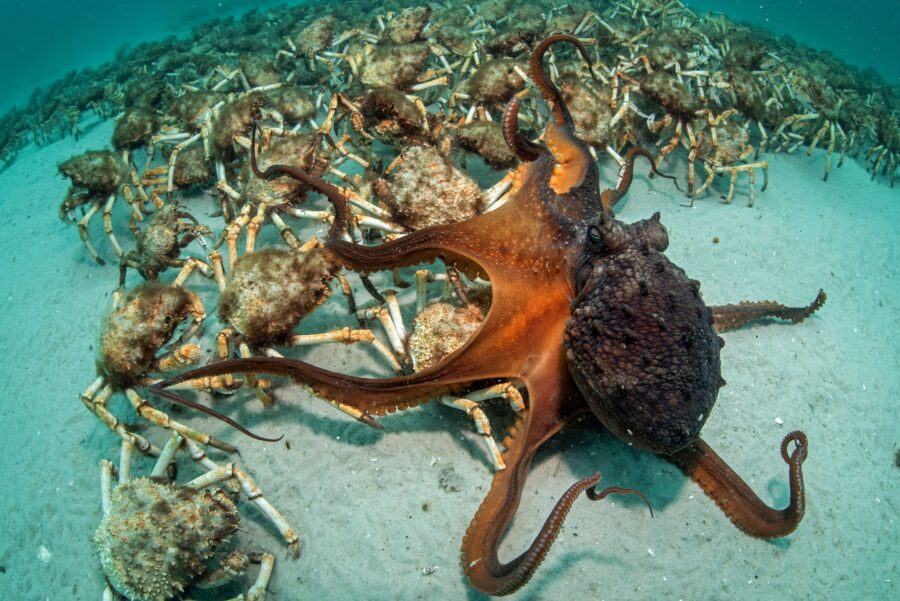Gene-edited cane toads reveal the cost of albinism

A new study that uses albino cane toads carrying genes edited using groundbreaking CRISPR technology, has challenged the widespread belief that albino wildlife is rare in nature because it’s more visible to predators.
Albino animals have a genetic condition that prevents melanin production, which makes them white in colour.
Macquarie University scientist created albino cane toads using CRISPR-Cas9 for the Peter Pan project and compared their survival and development with non-albino cane toads and tadpoles in a controlled laboratory environment – without predators. They found the albinos had higher mortality than their pigmented counterparts.
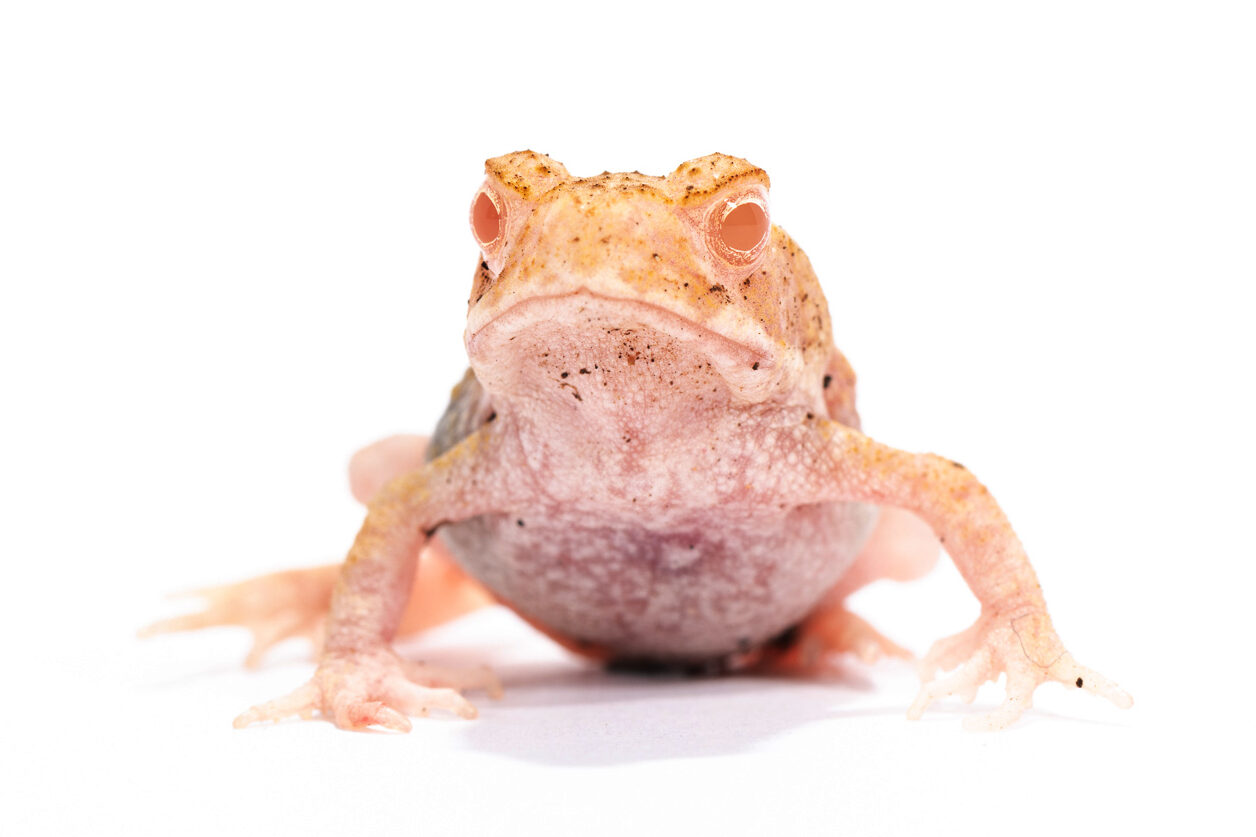
CRISPR is a sophisticated gene-editing technology that allows scientists to precisely target and modify specific DNA sequences using the enzyme Cas9, which cuts out the DNA sequence like a pair of ‘genetic scissors’ so it can be deleted, disabled or replaced with another sequence.
This pioneering technology has revolutionised medical research, offering breakthroughs for people living with life-limiting genetic disorders such as cystic fibrosis and sickle cell anaemia.
But its application in experimental evolutionary biology is only now being realised.
Loads of toads put to the test
The study, led by PhD candidate Alex Funk at Macquarie University, compared the fitness of albino and non-albino cane toads, both as tadpoles and adults. The cane toads were genetically similar – except for the albino gene – because they shared the same parents and came from the same clutch of eggs.
Alex and his team hypothesised the albino adults would perform worse than their pigmented siblings because their vision impairment – caused by the lack of pigmentation in their eyes – would hinder their foraging ability. He didn’t expect the albino tadpoles to be at a disadvantage during early development.
The results were surprising. When raised in separate tanks, the albino tadpoles grew at a similar rate to their pigmented siblings. But when albino and pigmented tadpoles were raised together in the same enclosure, the albinos died more frequently and metamorphosed faster than their non-albino siblings.
“We know from previous research that when tadpoles metamorphose faster, it’s often due to environmental stressors, and they can also die due to stress,” Alex says. “We thought maybe that had something to do with the albinos being stressed out by the presence of pigmented tadpoles, and that was really the most shocking result to us. We expected to see effects during the toad stage, but not so much during the tadpole stage.”
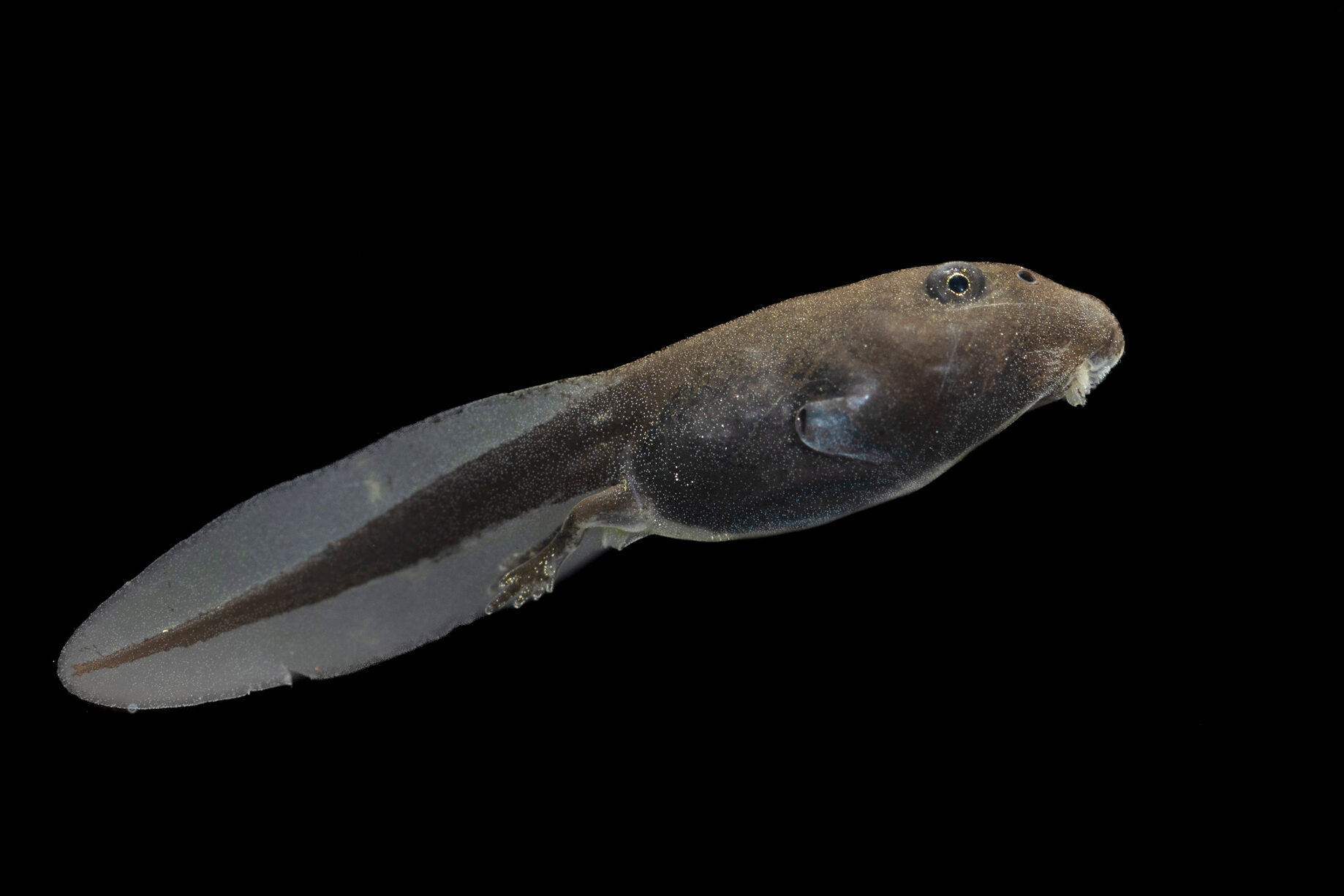
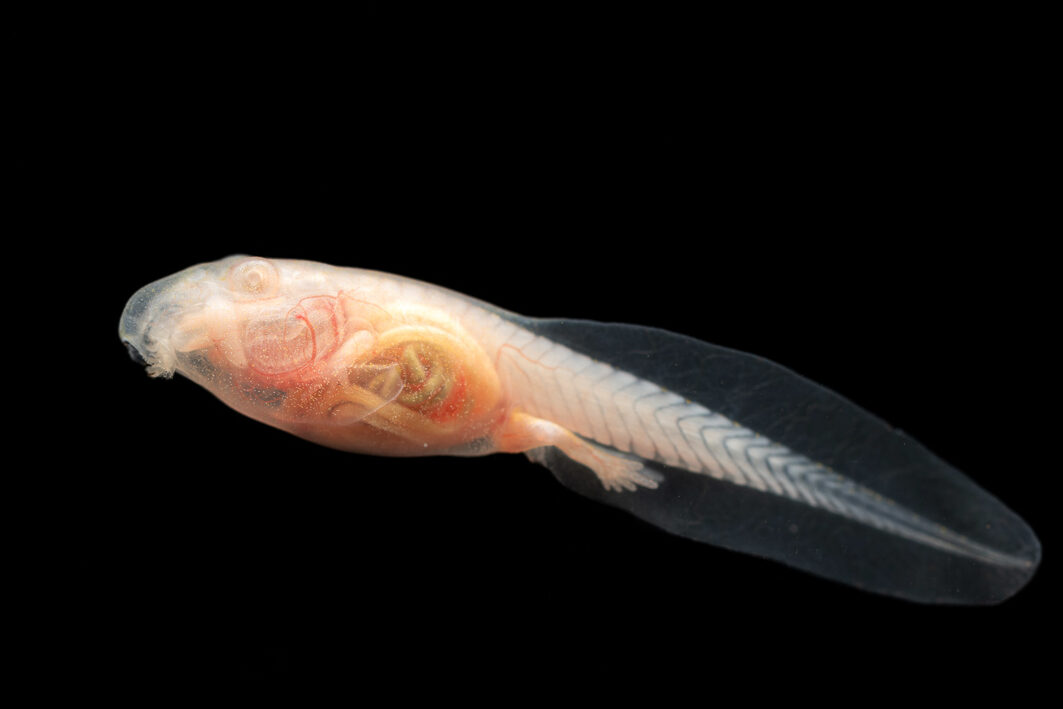
These findings suggest albino tadpoles experience other disadvantages in early development, beyond poor vision (and increased visibility to predators).
When studying adult cane toads, Alex and his team were surprised by the differences in growth and survival rates between albino and non-albino toads – even in the absence of predators.
“When you raised albino toads with the pigmented toads in the same enclosure, so they were competing with each other, the albino toads barely grew at all, and the pigmented toads grew like gangbusters,” Alex says. “The pigmented toads were almost twice their size by the end of the study.”
The albino toads’ poor vision impacted their ability to forage, resulting in higher mortality as they were easily outcompeted by their pigmented counterparts, who had fully functional vision.
“They [the albinos] would see the termites and they would strike at them, but they would miss, over and over and over again,” Alex says. “Whereas pigmented toads would see a termite, strike straight at it, eat that termite straight away. So it was pretty clearly an effect on vision that we were detecting.”
CRISPR meets experimental evolution
What makes this research so revolutionary is its novel use of CRISPR.
By ‘knocking out’ a specific gene, scientists can study how a trait or mutation impacts an animal’s fitness in a controlled laboratory setting.
“With CRISPR, we essentially caused the mutation [albinism] that we know can occur naturally, and we were able to look at the effects of that mutation in isolation,” Alex says. “Keeping everything else equal, we can get rid of this trait and see, do individuals with this trait do better or do worse?”
CRISPR allows scientists to create and study rare phenotypes (traits) in wildlife. “The reason there haven’t been many studies on albinos is because they’re rare in the wild,” Alex says. “Where are you going to get a sample size large enough to compare albino individuals to pigmented individuals? You can find that in lab mice, maybe, but you’re not going to find it in almost any other species, because those individuals are rare.”
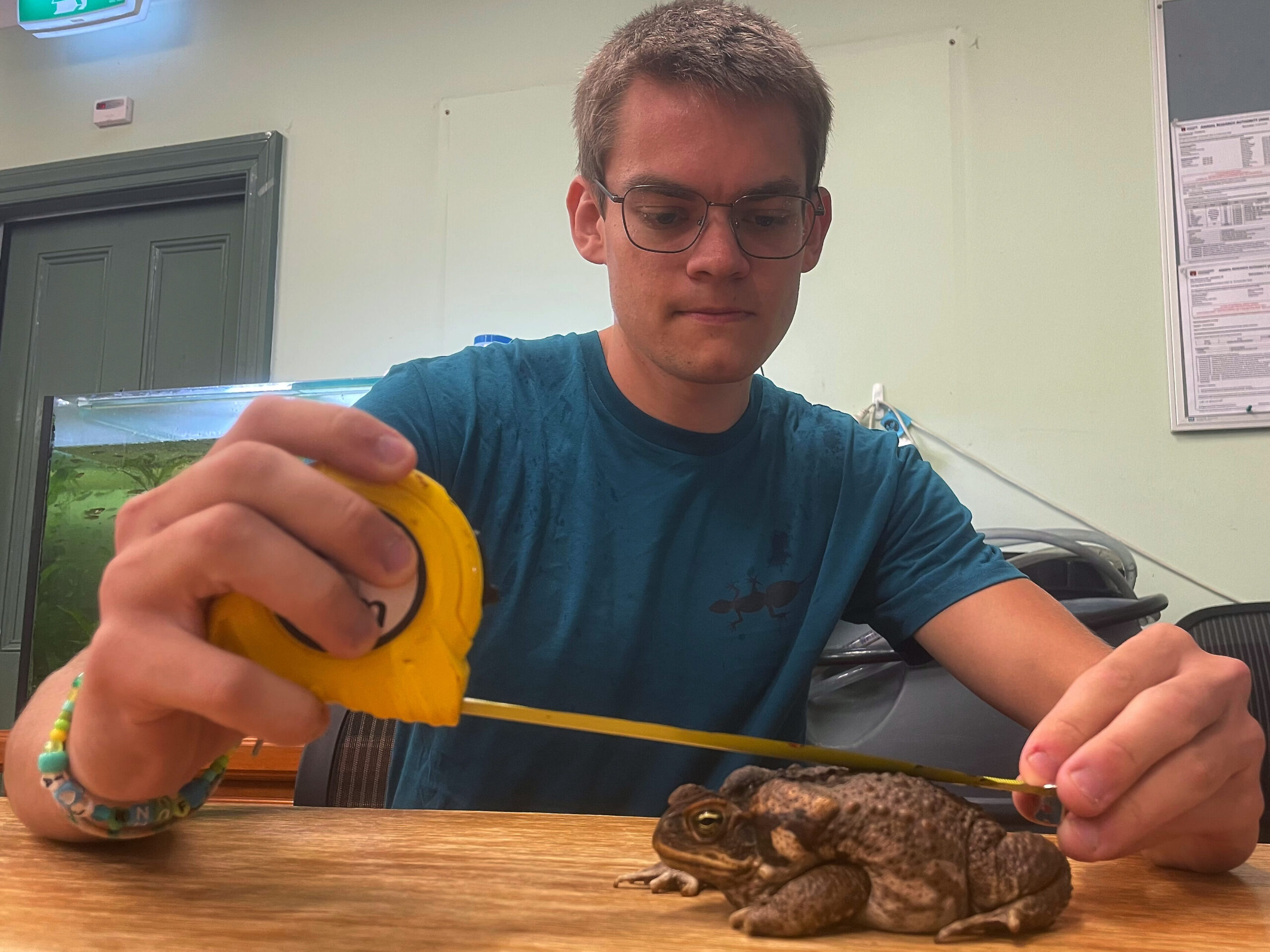
These experimental studies will offer new perspectives into evolutionary trade-offs – the costs and benefits of a specific trait. Alex explains that a trait that’s not beneficial to an animal will eventually be lost to time because of natural selection. That means that even if there is a benefit to albinism, such as reduced energy expenditure from not producing melanin, it does not outweigh its costs–competitive disadvantages and increased vulnerability to predation.
“The possibilities [of CRISPR] are almost limitless,” Alex says. “The limiting factor right now is our understanding of how genes are related to traits. The more studies that scientists do, connecting genotype to phenotype, or connecting a genotype to a specific trait, enables more and more studies of the effects of a trait on fitness.”
The research was published in the journal Proceedings of the Royal Society B.



